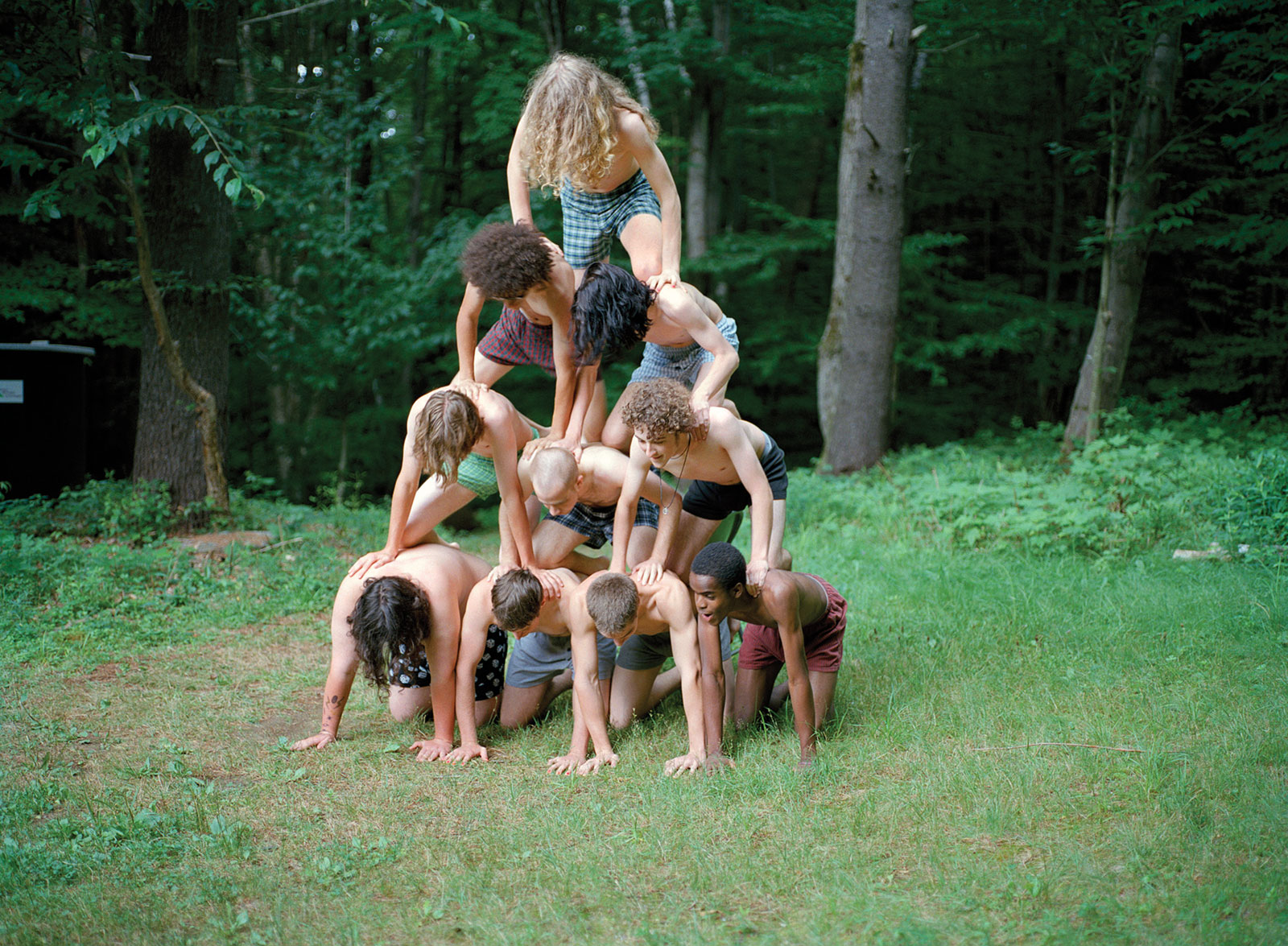
by Jonathan Blaustein
Ariel Shanberg is the Executive Director of the Center for Photography at Woodstock. He curated the exhibition “Camp: Visiting Day,” that is on view at CPW through August 28, 2011.
Jonathan Blaustein: You’ve got a background in art. You received a BFA in painting from Rutgers. Go Jersey. And you’re from New Jersey as well?
Ariel Shanberg: I am.
JB: Me too. So how did you transition from painter to non-profit executive director?
AS: As a young artist graduating from Rutgers, I knew where New York City was, how to get there and find my way around. But I was much more interested in finding an environment where the arts and making art were more enmeshed with life. New York City felt like business, and I wanted to find a place that was more focused on the other aspects of art. Luck and serendipity brought me to Woodstock.
I had heard a bit about it while I was in school from a few of my professors, Martha Rosler and Diane Neumaier, who had done things with CPW. So I walked in, introduced myself, and asked how I could be involved. They said they had a internship program, and I said “That sounds great.” I was 23 at the time, and really looking to get exposed to arts administration, and what it was like to facilitate arts programming for the community.
I was really fortunate growing up, because art was a part of my daily life. Both of my parents had studied to be artists, and I was surrounded by friends of theirs who were artists as well. It was that love of art, when I got to CPW, that got me to say, “Yeah, I’ll work here for free.” And it hasn’t changed that much over the years.
JB: So you decided to move to Woodstock as an art community, and then you got the job?
AS: Exactly. I loved that it (CPW) was nestled in the daily life of Woodstock. That it wasn’t set in some arts district, or some stand-alone place that you had to drive to. You could literally get a cup of coffee, a morning paper, paper towels and groceries, and stop in and see what was on view at CPW.
JB: You know, it’s funny, it’s almost like you’re reading my to-do list. It says buy paper towels, and go see an art show. On a random Tuesday. It says so right here. (editors note: No, it doesn’t.)
AS: That access, and having art available to the general public was something that was really important to me. It wasn’t something that only people with certain degrees do, or people who have extra time. Everybody should see an exhibition at least once a week. It’s an opportunity to exercise your mind and see the world through other people’s eyes.
JB: CPW runs exhibitions, lectures, workshops, artist residencies, fellowships, and publications. A bit of everything. How does it all fit together, beyond the fact that it’s all coming out of one physical space? How did the program evolve to be so wrap-around?
AS: CPW’s founding was in response to the fact that photographers didn’t have a home in one of the country’s oldest art colonies. It was established first as the Catskills Center for Photography, so photographers would have a place to exhibit their work, foster community, and develop their own knowledge. When our founders, which included Howard Greenberg and Michael Feinberg, began the institution, they started with exhibitions and workshops. Two very basic things. One was using wall space to show work, as the first shows were Walker Evans and Russell Lee. Nice roots to begin the endeavor.
JB: The workshops went hand in hand with the exhibitions, because I would imagine the workshops would create a revenue stream that would enable you guys to keep the doors open from the beginning?
AS: That was part of it, but it was more about connecting photographers. We’re talking about 1977, when there weren’t that many photo programs in schools. Photography was still struggling for legitimacy within the art world. People were looking to take this utilitarian device that everyone had in the house, and do something more with it. The desire was to connect people who had something to offer to people who wanted to learn. That’s always been the motive and the mission of the workshop program. We want to see people develop their practice, refine their vision, and achieve their goals. Whether that be to exhibit in a gallery, to have an essay published, to refine their website, or build connections with other photographers.
Over the years, the staff and various directors have looked at who’s getting served in the field, who’s getting opportunities, who needs to be championed, and how can we help? Right off the bat, pre-Internet, the magazine, Photography Quarterly, was established to connect with audiences beyond our immediate borders. It has achieved that, and even with the Internet, the print publication serves as a lasting document archive to the ideas and the work. With some of our other programs, like the fellowship award, it was specifically designed to help artists working in Upstate and Central New York.
Our residency program ties us to the deepest roots of Woodstock as an artists colony. Even though we had a darkroom and expertise, it wasn’t something we were actively engaging. The program got started in 1999, and has allowed us to play a role in the creation of some pretty significant bodies of work by some great artists. It’s all about nurturing artists, whether it be educating them, giving them opportunity, serving as a bridge. Sometimes we need a bridge to master artists to mentor and educate us, or a bridge to audiences to connect our work to them. We also hope to be a bridge for artists to collectors, and to audiences who will become stake-holders in their own work and efforts.
JB: You mentioned that Howard Greenberg was a founder, and I noticed that some major New York gallerists were on your advisory board, like Yossi Milo, Brian Clamp, & Daniel Cooney. How does that connection to the NYC gallery world drive your programming?
AS: Dan Cooney is an alum of SUNY-New Paltz, and as a young college student, in his summers, would come up to Woodstock and attend our visiting artist lectures. Some of his best education in photography, as he shared with me, came from our lectures. Which, when you’re living in Upstate New York, you wouldn’t normally get in a small rural town of six thousand people. Which speaks to why some of those people are on our advisory board, but also where that education and bridge-building goes. Dan’s a great example. With all those people you’ve mentioned, and others, they really value CPW’s commitment to nurturing artists, particularly emerging artists. As galleries, they recognize the important role that spaces like CPW play in the role in the development of artists that they will eventually work with.
JB: How do you see the role of non-profit galleries as differing from commercial galleries, both to the artists and the art audience?
AS: We’re not commerce driven. We have a different definition of success. We’re really interested in risk-taking and providing a platform where artists can push their work and experiment. We don’t need to make sales because we’re supported by grants and foundations. I think that non-profit spaces are great places for young, emerging artists to be discovered. I have no qualms on being a step on a ladder in career development. The other thing, and this goes beyond emerging artists, but for mid-career artists too, the scholarly and curatorial investigation of artists’ work that can take place at spaces like ours. Being outside of the market-driven art world, we’re able to have conversations on and through the work of photographers, (and artists working with related media) that help contextualize their work in a larger dialogue.
JB: I noticed you guys did an exhibition from the VII agency late last year. You were showing prints that, certainly in the past, would have been considered photo-journalism. What was the audience reaction to being surrounded by that kind of suffering and tragedy?
AS: It was a great exhibition that was organized by Tufts University, and we were really honored to have it on view. The exhibition space is a remarkable environment where you can slow time down, and you can ask people, particularly with a still image, to consider the ideas or histories, and the narrative that often flash by our eyes. They can see things with a new light or perspective, as they’ve been re-contextualized outside of news information sources. The response to the show was pretty much, across-the-board in awe. For the commitment that the photographers in VII have made to telling these stories, and to the generosity of their subjects as well. There are many people in devastating situations and plight, but I think people left that exhibition feeling a little more connected. Maybe a little more responsible for the world we live in. It definitely did not leave people feeling down and depressed. I think the notion of going to a gallery just for entertainment or escape can work sometimes, but it should not define the exhibition space, or the museum-going experience. We seek to challenge and provoke our audience.
JB: One of the reasons that you and I got to chatting in Santa Fe last month was that you mentioned you were doing a show called “Camp: Visiting Day,” about the predominantly East Coast, I want to say 80’s experience, but I’m sure it’s still alive and well. I spent time, back in the day, in a sleep-away camp in Pennsylvania and one in New York. (The singer Pete Yorn was in my bunk for a couple of years.) A few weeks before we chatted in Santa Fe, I had some spare time, which is rare, and I found myself cyber-stalking my old camp bunkmates on Facebook. Not friending anybody, just finding the public photo albums, and trying to get a sense of what these goofballs looked like as 30-something dads and husbands. A lot of puffy faces, I assure you.
Truthfully, I’m not in touch with any of these people, they haven’t impacted my adult life, and yet I could recite everyone’s name in five seconds. These guys still pop up in my sub-conscious. So I found the experience pretty formative, and I was excited to hear you were curating a photo exhibition about Camp. I thought maybe you could tell us a bit about how you came to curate the show, and how it has resolved itself on the wall.
AS: Camp is not something that everybody has experienced, but it’s one of the most defining elements in our transition from young people to adults for those of us who have. It’s the first experience for people, sleep-away camp specifically, that they are away from their parents and have a certain sense of autonomy. While there’s supervision, it’s almost an unabashed indulgence in youth. Swimming, sports, arts & crafts. It’s also a place where we try out and explore our identity. There’s something about the nine months of the school year that lock us into a sense of perspective of identity that may or may not be our own. One that’s pressured by certain societal and social norms, and when people go to camp, they’re often interacting with kids who might not live in the same county or state. So there’s an opportunity to reinvent or claim for the first time who you are. With this being our summer exhibition, I wanted to celebrate that.
I’m a person who went through a number of years of sleep-away camp, they were really some of the first moments where I was able to see myself as an individual. The artists I ended up including in the exhibition really celebrate and identify the ways that we relate to camp. You have somebody like Jennifer Loeber, who photographed shortly after attending Rowe camp, which she went to in Western Massachusetts. This is a camp where literally, kids are governing themselves. They’re planning their schedule, and in a society where kids tend to be so over-programmed these days, this was an incredibly empowering experience. During their time there, they have the opportunity for them to mock normal conventions, and celebrate eccentricity and individuality.
(click images for larger version)
JB: If we had had that back in my day, with the kids in control, it would have been Guns’ n Roses on the loudspeaker all day, every day. “Welcome to the Jungle” on a total loop until everyone killed themselves. Which, in retrospect, doesn’t sound like such a good idea.
AS: We had something similar, but it lasted only 24 hours. It was called Revolution, and the oldest bunk in the camp kicked out all the staff except for the kitchen staff, because of course you can’t let the kids get hungry. By the end of it, no matter how much fun you had, you learned just what a tough job it was, and you were happy to see those counselors come back.
JB: I suspect you might have been more responsible than I. You and I know, and now the audience will know, that there are probably dozens of summer camps within a 50 mile radius of where you’re at. Has it crossed your mind to try to set up some sort of field trip where kids actually come check out the work on the wall?
AS: Originally, we had hoped that would be the case. There are some adult themes within the exhibition that make it challenging to get a blanket approval for a camp audience of teens.
JB: One of the artists, you’re referring to, his camp was purchased and turned into something very different…
AS: You are correct. Adrain Chesser, as a young boy and a Boy Scout, went to a campground in Southern Florida, and struggled at that time with being a closeted gay male. In an act of sublime surprise, he found out years later that the very same campground was purchased by a group of gay men who turned it into a gay campground. He returned, as an adult gay male, to photograph that campground. The pictures evoke the joy and freedom of camp, the game-playing and interpersonal relationships that take place. I love the work, it’s some of my favorite in the show. But when you’re bringing in a group of kids from different families and backgrounds, it’s a challenge to make sure that everybody’s going to be OK with it.
JB: You mean their parents.
AS: The younger generation is always more open to new ideas and ways of being than the parental generation. One of the things we will never do is compromise by shielding the work in an exhibition…I don’t believe in censorship, and we’ll leave it at that.
JB: It sounds like you’ve got certain elements to your programming that you do on an annual basis. You were mentioning that you’ve an annual fundraiser, and I know that every year you do a show called “Photography Now,” with a major juror. This year it was Vince Aletti, and in past years Darren Ching and Charlotte Cotton. I would imagine if you get to look at the submissions yourself, that probably gives you an interesting snapshot on what’s being done in a given year. Have you noticed any changes in tenor, style or subject matter? Are there strong themes that emerge each year, or is it just a hodgepodge?
AS: In 2010, Lesley Martin was our juror as well. What has really shifted over time, in looking over the submissions from year to year, the overall quality is getting stronger. I think that is reflective of the craftsmanship within photography, and people’s visual language is getting more refined. The other thing that’s getting stronger is the multitude of strains and genres of photography. We’re in a time where working with wet plate alternative processes is as relevant as someone who is working with the visual language of the computer age as well as somebody who is traveling through the mountains of Tora Bora. That’s what’s exciting about the time we’re in.
As far as the jurors go, based upon their own track records and perceived interests, and I want to emphasize perceived, each competition or call for entries attracts a different set of applicants. With Vince Aletti this year, one of the really remarkable things was how he was cognizant of his daily life experience impacting what he chose. As Vince professed, he’s a portrait person. Yet having been a juror for World Press Photo, and having spent ten days looking at intense, narrative, photojournalistic and documentary work, when he came back and had the DVD with all our applicants, he found himself gravitating towards a different type of work. Photographs that reflected more artistic exploration, with evidence of craft and the artist’s hand, that he wouldn’t have responded to had he not had that experience. That’s something that’s very generous of a juror to reveal. To reduce it to the simplest terms, it’s like saying “Hey, I had pancakes for breakfast, so I was attracted to things that are round.”
JB: The shoe was on the other foot, in that you were just a juror for a group exhibition at the Houston Center for Photography. What did you bring to the table?
AS: There’s a different approach in jurying a group exhibition, versus curating an exhibition, like the Camp exhibit, which was an idea that was percolating in my mind for twelve years. When it came to the HCP member’s show, I recognized this as a subset of photography I am pulling from, and wanted to find the best of the best. I was interested in putting together an exhibition for them that celebrated the great range of power that photography has as a communicative tool.
JB: I’d love to get to see it, but I have no plans to go to Houston this summer.
AS: On their website, they have at least one image for each artist, which is a nice survey of the work in the show. But I have to say that nothing beats seeing the work in person.
JB: I’ll have to check it out. We talked about what you do up in Woodstock, and there are so many programs available to photographers, but what’s the best way for someone
to get on your radar screen. How do you like people to get their work in front of you?
AS: One of the important roles of a not-for-profit space like CPW is to be as accessible as possible. That said, it’s also important to recognize that we do a lot, and when somebody approaches us, we want to know that there’s a serious level of commitment, not only to their work, but to the possibility of us working together with them. One of the things I strongly advise against is, don’t just send us an email saying, “Hey, take a look at my website.” We want someone to really take the time to introduce themselves to us. We want to them to show they’ve been thoughtful in their approach to us, because we’re going to be thoughtful in our approach to them.
JB: Sounds like a thorough, well-thought-out info packet, on the heels of some serious research into what you guys have shown and funded in the past.
AS: Always the best way. And don’t start the letter to me with Dear Ms. Shanberg.
JB: (laughing) You know we’re not going to cut that. It’s going right into the interview.
AS: I had a feeling. It’s one of the trials of having a gender-ambiguous name.
JB: How about Dear Sir or Madam? You’ve got to get a lot of those, right?
AS: That just reflects not doing the homework. All you have to do is read one of the staff member’s bio’s to see who to send things to and what their gender is.
JB: It’s funny. You and I met briefly at the PDN Expo that I chronicled for APE last year, and listening to the lectures during the event, that piece of advice was spouted
so many times. Do your homework. I came away wondering how could it be possible that so many people don’t?
AS: I’ll say this, making your photography, doing your art, is something that for a lot of people is a combination of technical skill, professional know-how, and personal dream and fantasy. Being an artist is this incredibly fantasized notion, and for a lot of people, it’s a place where they put their dreams. When you’re doing that, you tend to forget your practical business skills, or you tend not to think about bringing all the other skills you have to it. Because it’s about being “creative.” To put it in a concise term, being creative doesn’t mean not being professional.

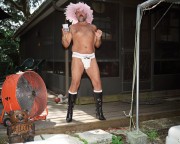

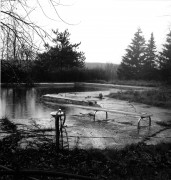
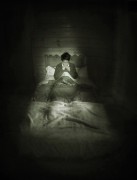


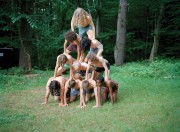
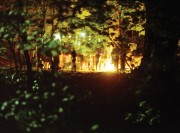
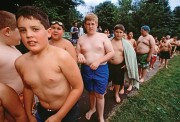
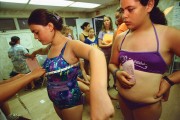
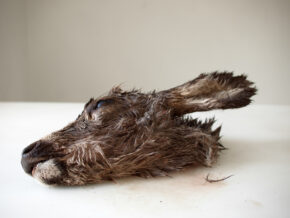
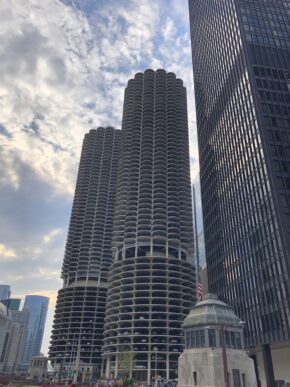
5 Comments
JB, I have to say that you have stepped it up again. I love the insights that you have pulled out in the interview. Well done and I am looking forward to the next.
As always, Ed, I appreciate the compliments. So glad you enjoyed the read.
[…] via Interview With Ariel Shanberg, Center for Photography at Woodstock. […]
[…] aphotoeditor. Tags: creativity, professionalism, Quote […]
[…] Ariel Shanberg, Curator, via A Photo Editor This entry was posted in Outsiders and tagged Creative, Professional, Shanberg. Bookmark the […]
Comments are closed for this article!